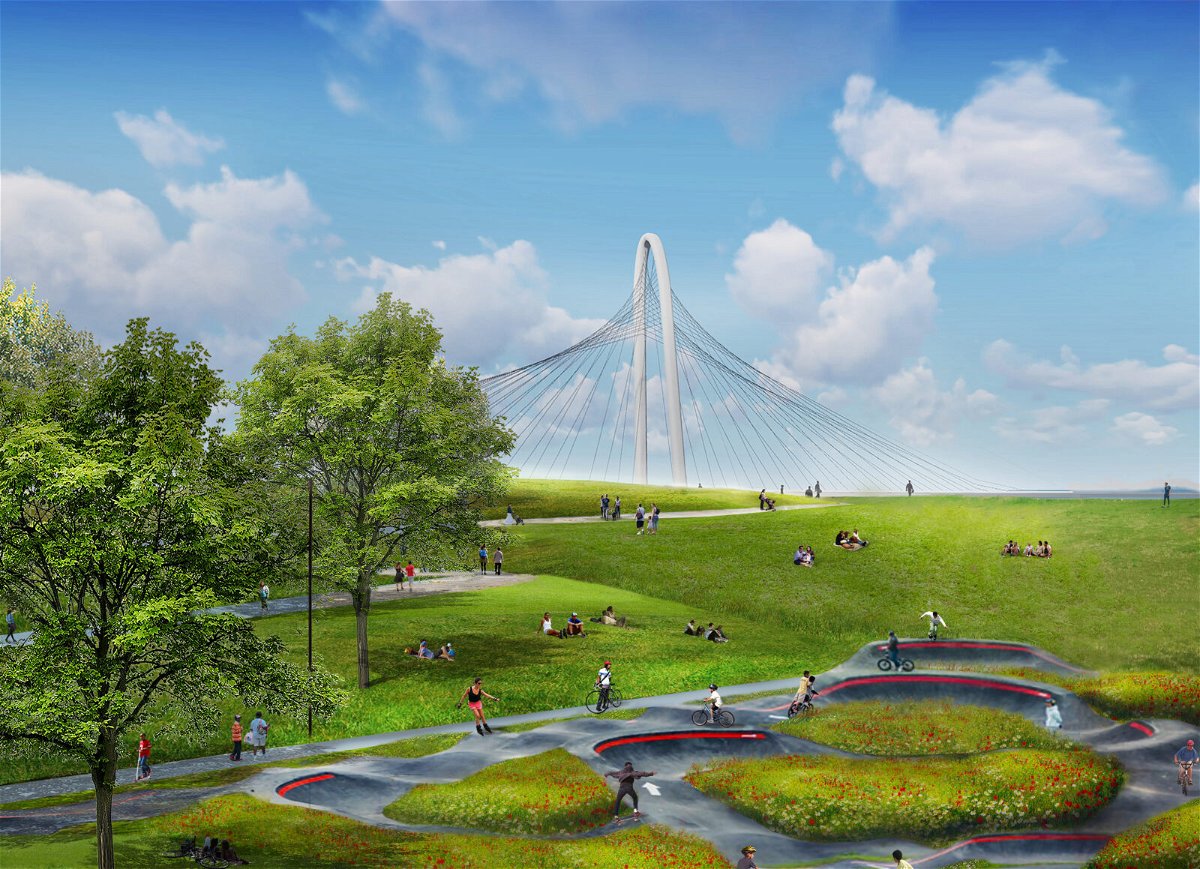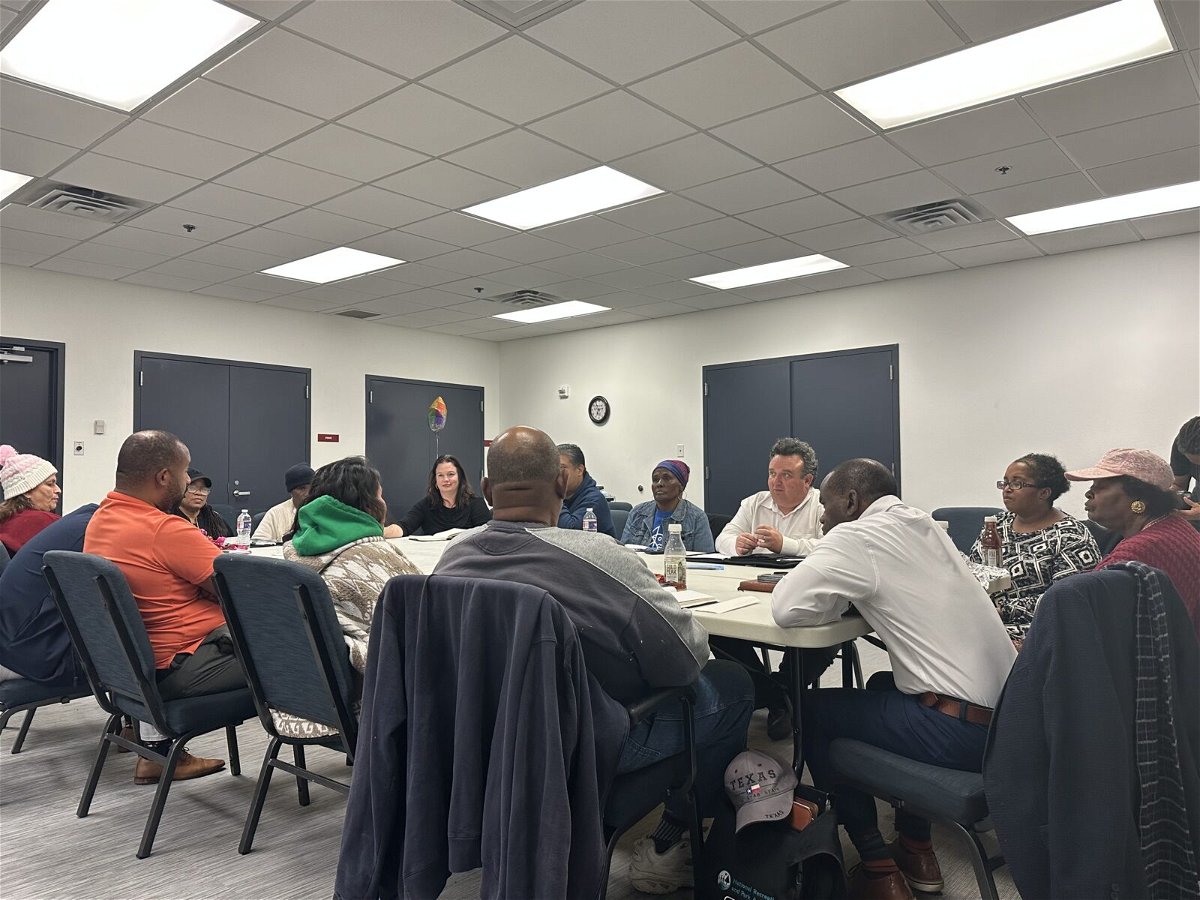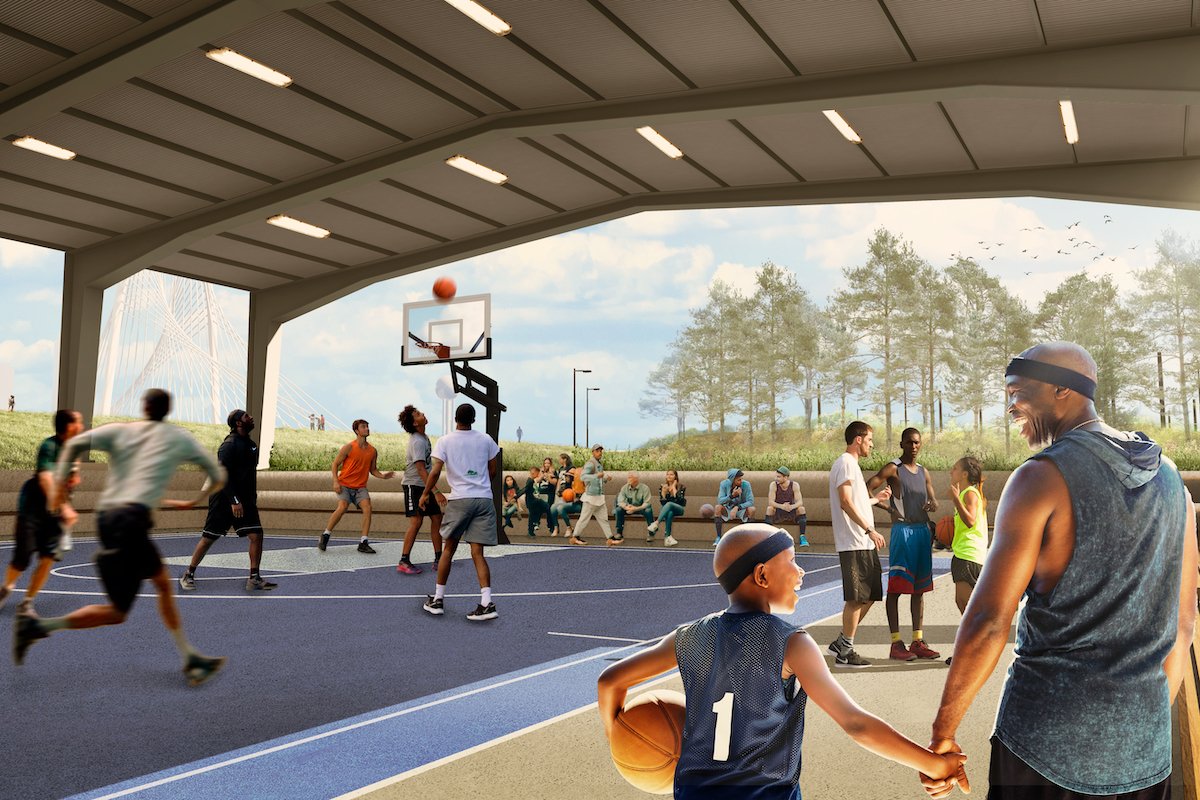What West Dallas residents think of the Harold Simmons Park coming to their neighborhood
Once upon a time, the City of Dallas came up with a plan to build a 10,000-acre “world class” park and tollway right next to West Dallas — within the Trinity River levees. Twenty-five years and tens of millions of dollars later, plans have changed.
The tollway died a slow death until City Council finally killed it six years ago. And the $325-million park project fully unveiled today includes few changes along the riverbeds.

Neighbors familiar with the Trinity’s ebb and flow aren’t surprised.
“Can you see what that river can do?” West Dallas neighbor Raul Reyes Jr. says. “We could have told you right off the bat. We’ve seen what that river can do.”
Reyes grew up in the Los Altos neighborhood of West Dallas. He was among those who spent their childhoods playing within the levees and on the banks of the river — sliding down slopes on cardboard boxes and discovering wildlife and nature.
The river is part of the community’s history.
“I remember when it rained, the water would rise to the top of the levee,” says Alice Fuller, who describes herself as being “rooted and grounded” in West Dallas.
Longtime Gilbert Emory neighborhood resident Paula Hutchison remembers church “elders” telling stories of baptisms in the river.
“We had just the one room church building made out of wood. We didn’t have a baptismal pool and we didn’t sprinkle. So we walked right down to the end of West Main and went down into that levee, and that pastor dipped people in the water.”
Those who live along the Trinity know the river best, but they say no one consulted them before deciding to build a park in the floodway.
Developments in West Dallas ‘happen to us,’ not for us
Before unveiling the new plans for the 250-acre Harold Simmons park — with a price tag of $325 million for construction and an endowment — Trinity Park Conservancy CEO Tony Moore convened several longtime West Dallas residents and community leaders, asking them to share their concerns about what might happen as yet another new development is thrust upon them.

Neighbors were clear: They didn’t just want to be listened to. They’ve told their stories and said their peace for years — even before the Trinity Park Conservancy, when it was still called the Trinity Trust Foundation.
What they want now is for the conservancy and anyone else listening to act in ways to ensure the park will actually benefit neighbors.
“We’ve already had to stand back and watch the Margaret Hunt Hill Bridge happen to us. No one tried to ask us to participate,” Hutchison says.
Once the Santiago Calatrava-designed bridge was completed, Hutchison and Patricia Stephens of Westmoreland Heights recalled neighborhood ministers being “summoned” to pray and sing old gospel hymns at the celebration, even though residents hadn’t been included in the bridge’s planning or decision-making.
“It is a belittling effect to treat us that way instead of saying, how is this going to affect you?” Hutchison says.
The bridge, the massive Trinity Groves development and others that followed, a proposed yet failed 400-foot office tower, the coming high-speed train, and now a park — all of these projects amount to hundreds of millions of dollars, both private and public, invested into a historically disinvested Dallas neighborhood.
A beautiful community in which residents can thrive and be proud is something that West Dallas residents have sought from the powers-that-be for decades. Now that it’s on the horizon, their question is: How will we be able to stay here and benefit from it?
‘A park for all people’
Moore emphasized during the community convening that the $325-million project would be “a park for all people.”
“We are going to work our darndest to make sure this is a park where you feel welcome,” he promised.
In order for “a park for all people to be relevant to all,” Moore says, “we have to get out and understand the community that we serve.”
The park is now proposed to be built along rather than in between the levees, as the U.S. Army Corps of Engineers has not approved construction within the floodway. It will be named for the late Harold Simmons (his family donated $50 million to secure park naming rights) and will include new sport courts and a giant roller skating rink overlooking the river, Moore told neighbors, holding up a placard with a bird’s eye view of the design.

Of the seven neighborhood residents who participated in last week’s conservancy convening, only two or three had seen the miniature plans for the park showcased in their Design District offices.
“First of all, we’ve got to let the community know there is going to be a park,” Hutchison told the conservancy.
The first two decades of back-and-forth planning were followed by mostly silence for the past several years, as the conservancy pivoted to a new plan that met Corps’ approval.
That new plan involved purchasing 13 acres of land in West Dallas, in a mostly industrial area just west of the levees between Main and Commerce. These purchases plus City of Dallas land create a total of 50 acres of redesigned “overlook” parks, in addition to the 200 acres of floodway between the Margaret McDermott Bridge and the Ronald Kirk Pedestrian Bridge.
Up until this point, community residents largely were in the dark about the “Felix Lozada Gateway” and “West Overlook” — the “signature entrance” and “hub of activity and community” — that will be constructed right in their neighborhood over the next three years.
‘Bring some economic value to people’s lives’
What neighbors do know is that this park will somehow contribute to the rapid gentrification of their community, which is causing swift and substantial property tax increases unaffordable for most of West Dallas’ working class families. Neighbors like Hutchison challenged the conservancy to use their funds, power and influence to address that harm as the park is constructed.
“Bring some economic value to people’s lives, you know, bring something to the table that lets people know that it’s all inclusive,” Hutchison says, “that we had a hand in what is actually developing in our own community.”
The conservancy emphasizes that they have been having private conversations with West Dallas leaders for months to make sure their wishes are reflected in the new park designs. As a result, the conservancy incorporated community suggestions such as outdoor grills, a dog park and a spray pad for relief from Dallas’ hot summers. They are planning a community market space with intentions to prioritize neighborhood vendors.

In addition, no admission fees or gated areas will restrict who can enjoy the park. Only one area is designated for special event reservations.
While park designs are finalized, the conservancy says they still are looking for community input in terms of art that will decorate designated areas, nods to West Dallas history, and “compelling programming that would draw you and your family to the park,” Moore says.
More than anything, though, neighbors asked for two things:
1) Prioritize us for park jobs, both during construction and ongoing maintenance, and teach our young people the specialized skills to do more technical work for the West Dallas park and beyond.
2) Use your influence and connections to give our residents property tax relief, so we can stay in our community or pass on generational wealth from rising property values to our children.
What the Trinity Park Conservancy can do for West Dallas
Moore continued to emphasize that his power as Trinity Park Conservancy CEO is limited.
“We don’t have the ability to stop the gentrification that is happening right now, even if we don’t put our shovel in the ground,” Moore says. “So what we have to be honest about is what we can do.”
Reyes says jobs are the “low-hanging fruit” for the conservancy to address.
“The problem here is that we keep talking about investment into the dirt, but no one is talking about, how do you invest the people? Because the only way that we’re going to be able to keep up with the investment on the dirt is making sure that people keep up with that,” Reyes says.
With a $325-million dollar investment going up against West Dallas’ median income of $42,000, “there’s no way that you’re able to keep up with the growing property tax valuation that’s going up basically 100% every year,” he says.
“I hear you,” Moore told Reyes, “and we’re committed to doing whatever we need to do” when it comes to giving West Dallas residents access to the jobs the park will produce.

Neighbors told Moore that jobs are just the first step. Reginald Hurd says he and his neighbors recently tried to convince developers, as they constructed newer, larger homes in their Gilbert Emory neighborhood, to make a commitment to the existing residents.
“All we got was placated because they did not see a powerful formidable organization,” Hurd says.
Hurd asks Moore if there is a powerbroker — an organization or person whom others with power would actually listen to — who could advocate for property tax relief for neighbors and longtime residents.
“We know that these taxes are going up by 100% to 150% a year, and in some cases even higher than that,” Hurd says, tapping the table to emphasize his points. “Is there something by policy that can put a freeze on those accelerated taxes? Limit them to a certain percentile? Is there a conversation that can be had with those who have the influence to start trying to write policy? To slow it down, at least.”
Homestead neighborhood president Rayella Delley Boyd speaks directly to Moore: “You know more than anyone who those people would be.”
Moore told the room that after hearing this concern over and over, the conservancy went to business leaders, foundations and their own board members and asked for help. He says they’re organizing a property tax assistance program with “a little bit of money” that’s “not going to solve this big problem, but as it relates to around the park, we’re trying to figure it out to see if we can help one family here and can help another family there.”
The lingering legacy of West Dallas redlining
A little money doesn’t go very far in West Dallas, Stephens says, especially with a state-of-the-art park coming to the neighborhood that will attract wealthier residents.
“If we’re going to compete with the million-dollar homes, the older homes have to be improved,” Stephens says.
A recent City of Dallas program offered neighbors $20,000 for home repairs, but “what can you do with $20,000? Nothing,” Stephens says. “Most of the people need foundations; that’s $30,000 or $40,000.”
“If you’re going to do anything,” Stephens says, “if our taxes are going up, why don’t you give us the money to improve — even if it’s a loan?”
Stephens says obtaining a loan in West Dallas is difficult.
“Our area is red-tagged. You can’t get a loan out here,” Stephens says. “We are doomed. They don’t intend for us to improve because if they did, they would help us.”
Hurd echoes Stephens’ sentiments: “The developers are calling every single day and offering pennies for what they know the value of the property is going to be. Is it intentional or coincidental?”
“I would say more intentional.”
The redlining Stephens references is the federal government’s Home Owners Loan Corporation maps that colored West Dallas red or “hazardous” for loans in 1940. The presence of Black and Latino residents was a primary cause of marking a community red, as were poor housing conditions and the lack of community amenities, such as parks.
Reyes remembers when wooden posts were put up as barriers to enter into the levees. His children never played there the way he did. He understood the barriers may have been put up for public safety, but he says the community saw it as the Trinity River being “taken away from us.”
“Now, we are going to build this park. That adds to insult. We know it’s going to be a park for privilege. We feel that way because we haven’t been a part of the conversation,” Reyes says.
“As long as we are not part of those conversations, that park is not for us.”
Additional reporting by Sujata Dand

Balanced and well developed statement re. how the West Dallas community hopes and needs to be involved with the final development of the Trinity River Park. BRAVAS!
I have absolutely no sympathy for these residents. Dallas desperately needs projects like this. Go move somewhere else if you don’t want the area to be improved. Gentrification is a good thing.